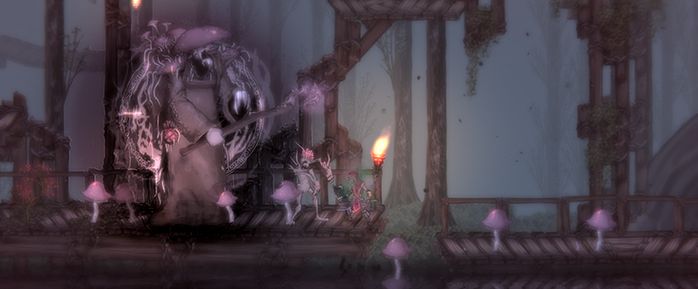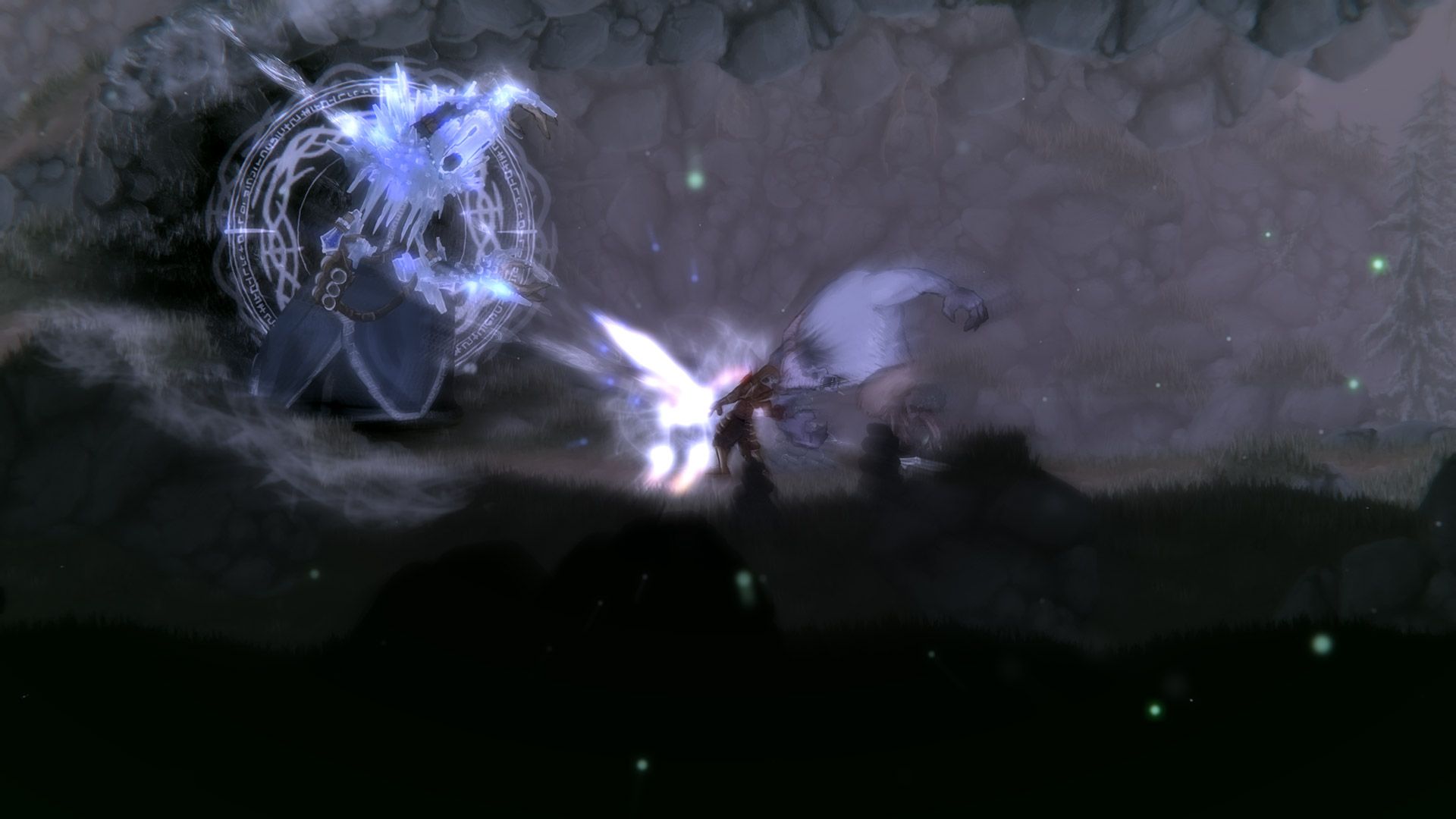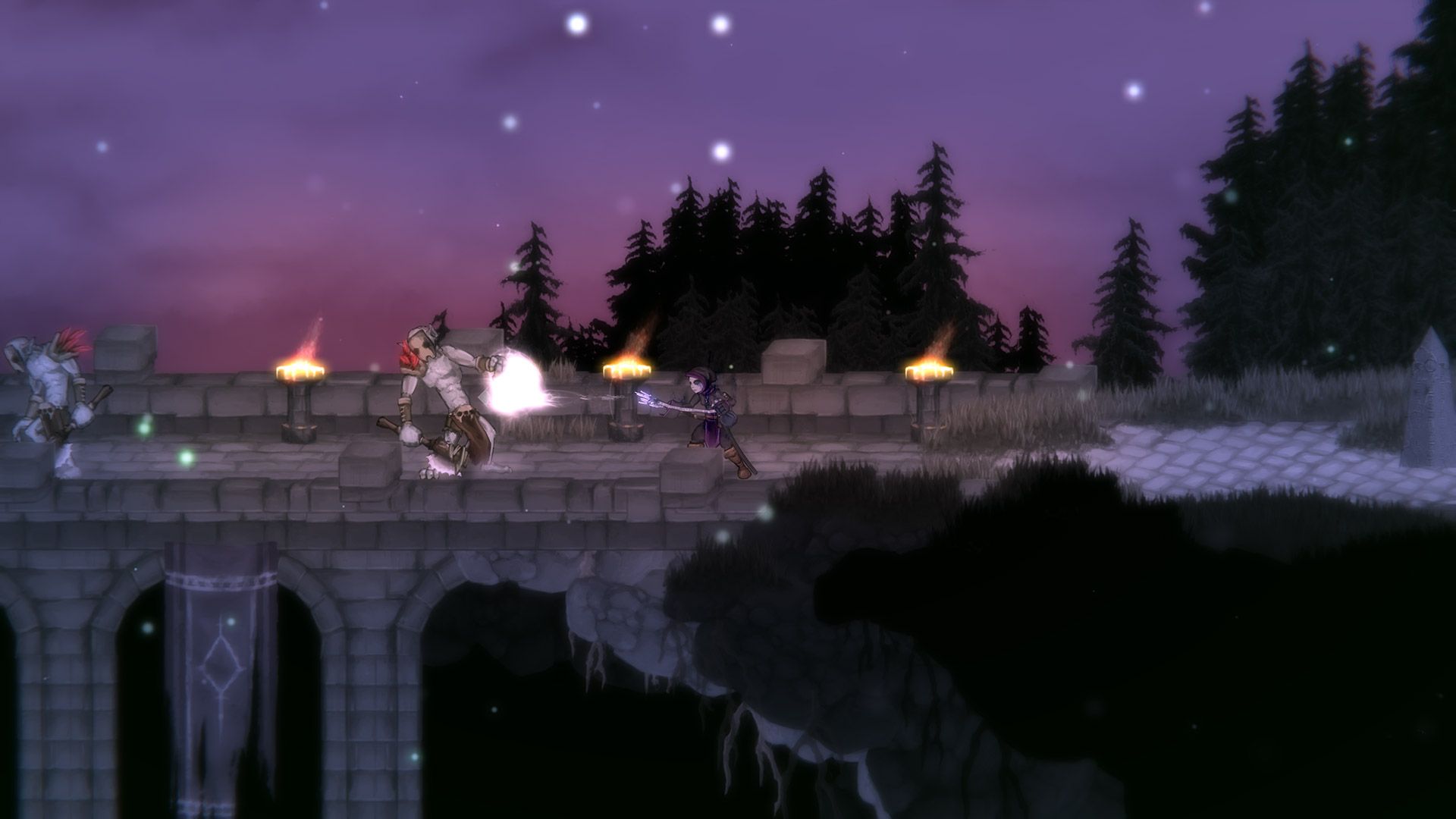One of the big problems with the dark ages was the punishment fitting the crime. Nowadays blasphemy or other moral failings like drunkenness get a bit of a shrug so long as people aren't too obnoxious about it, but in the time of Salt and Sacrifice this was the kind of offense that could get someone banished to the far reaches of the land as a Marked Inquisitor, forced to take on corrupt and powerful mages. It's an excessively-harsh sentence, especially when taking into account the sheer number of times the poor convict will die and resurrect only to get their face smashed in again before finally rising triumphant against the current group of monstrosities.
Salt and Sanctuary was a 2D Metroidvania take on the Dark Souls series, as unashamed about its borrowing of gameplay elements as it was skilled in pulling them off. Six years is a comfortable length of time for a series to rest between entries, though, so now Salt and Sacrifice is now in the final stages of getting ready for launch. A major part of its pending release took place this last weekend with a network test, featuring the starting area of the game and a good workout of the multiplayer options. What it showed off was a game with rich, deliberate combat against enemies who will cheerfully rip apart anyone who doesn't approach them seriously.
Salt and Sacrifice starts out with a bit of character creation, featuring multiple classes that play differently enough that it's easy to plan a second play-through even in the earliest stages of the first. Once you've chosen not only the class but also what hideous crime got you sentenced to in this remote hellscape, plus tweak the character's look with a handful of visualization options, a brief tutorial goes through the combat and movement options. Attack, defend and dodge-roll are the basics, and each class also comes with a ranged weapon and other special skills. There's unquestionably a learning curve once the game starts properly, though, because the tutorial is all about the basics with only a couple of enemies to use them on before the traditional giant demon shows up to stomp you flat.
First up, though, the newly-christened Marked Inquisitor wakes up in a safe encampment that starts the plot rolling. A number of mages are active in the area and the only way to take them down is by eating their hearts, which would feel maybe excessive in a standard fantasy world, but makes perfect sense here. Various crafting stations are also available, and the two that will get the most use are the weapons and level-up stations. The starting gear is decent, once you get the hang of the combat flow, but stronger is better and even within the limits of the weekend test there was nice gear to work towards crafting.
While Salt and Sacrifice is primarily a combat-focused game, there's a good bit of platforming kicking around as well. The Inquisitor has your standard wall-jump plus can grab and pull up onto platforms, and after the first boss is finally defeated earns a grappling hook to latch on to marked bits of scenery. It doesn't take too long for the level design to open up with interconnected areas that loop back on themselves, frequently requiring multiple hops with the grapple and some careful jumping to avoid insta-death from fall damage. Enemies aren't quite so nimble, but do have decent jumping mobility as well, so hopping up to a platform is better used as a trap to get a solid hit on a reckless attacker than a retreat to safety.
Death is quick and easy in Salt and Sacrifice, but in between bouts of swearing at a boss' power strike or low-level goblin-critter's block and counterattack, its systems start coming together nicely. The combat flow isn't instantly apparent, but each defeat hones your knowledge of the enemies' patterns a little better until you're dodging, blocking and countering through multiple encounters in a row while hardly being touched. There's a reason Salt and Sanctuary was viewed as a Dark Souls clone despite its 2D nature and that's no different here, including rest stations that not only fill up your healing flasks but also reset enemies, the need to survive long enough to pick up the experience-equivalent from where you died, and the punishing nature of the combat in a land that has no patience for the careless. What earned that game a pass, though, was how well it executed its influences, and from the weekend test Salt and Sacrifice is shaping up to be a worthy sequel in every way. Leveling up and better weapons help, sure, but what really fuels progress is player experience, as evidenced by my second play-through as a different character class and taking down the first real boss in one attempt, versus the dozen or so it took with my earlier character. It's impossible until it's difficult and eventually becomes merely tricky. That's a progress that feels rewarding, and when it finally clicks makes the effort up to that point feel worth the previous failed attempts fighting through Salt and Sacrifice's unforgiving dark fantasy world.



